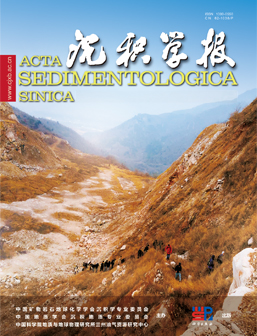Molecular isotope (δ2H) composition traits and geological significance of petroleum n-alkanes in hinterland of Junggar Basin, NW China
doi: 10.14027/j.issn.1000-0550.2025.020
- Received Date: 2025-02-27
- Available Online: 2025-09-17
-
Key words:
- Key words: hinterland of Junggar Basin /
- Hydrogen isotope of normal alkane /
- Biomarker /
- Mixed source crude oil classification /
- Factors affecting hydrogen isotope
Abstract: [Objective] The geological conditions in the hinterland Junggar Basin are diverse and the crude oil properties are complex. To address the issues of crude oil type classification and oil and gas source identification in this area, a study on the hydrogen isotopic characteristics of n-alkanes (δ2Halk) in the mixed-source crude oils from the hinterland Junggar Basin was conducted. [Methods] GC-MS, GC-IRMS, and GC-TC-IRMS techniques were employed to analyze biomarker compounds and conduct hydrogen isotope analysis of n-alkane monomers in 33 crude oil samples from different strata. [Results and Discussions] Three types of crude oil were identified in the hinterland Junggar Basin: Type I crude oil originated from the Jurassic coal-bearing source rocks (J1b), with the lightest hydrogen isotopic composition due to the significant input of terrestrial higher plant organic matter; Type II crude oil mainly originated from the Permian Fengcheng Formation source rocks (P1f), with Type IIA crude oil from lacustrine sedimentary environments in transitional marine-terrestrial settings, featuring a low Ga/C30H ratio and relatively heavy hydrogen isotopic composition, while Type IIB crude oil had a lighter hydrogen isotopic composition and a higher Ga/C30H ratio; Type III crude oil mainly originated from the Permian Lower Wuerhe Formation source rocks (P2w), with a light hydrogen isotopic composition of n-alkanes. [Conclusions] The combination of hydrogen isotopic analysis of n-alkanes and biomarker compound analysis can precisely classify crude oil types and clarify their sources, which is of great significance for oil source tracking and crude oil classification in the entire Junggar Basin.
| Citation: | Molecular isotope (δ2H) composition traits and geological significance of petroleum n-alkanes in hinterland of Junggar Basin, NW China[J]. Acta Sedimentologica Sinica. doi: 10.14027/j.issn.1000-0550.2025.020 |






 DownLoad:
DownLoad: